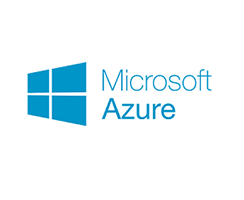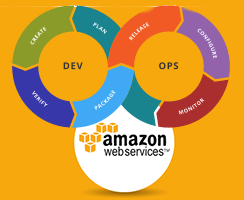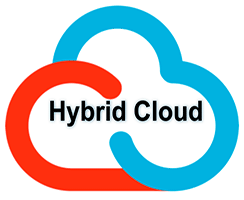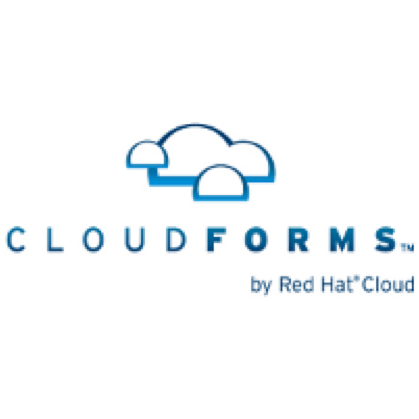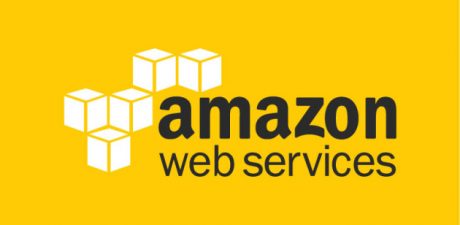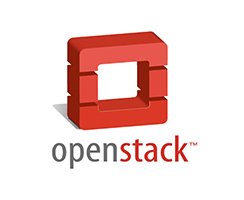
AWS Interview Questions & Answers
Q1. What are the pivotal components of AWS?
- Elastic Compute Cloud:
In case of arbitrary and volatile workloads, this principal part of AWS aids the users to rent multiple virtual computers, with which private applications can be executed.
- Elastic Block Storage:
EBS is a storage facility of AWS that aims to reproduce the working model of customary hard drives. EBS can be connected to Amazon EC2 instances.
- Identity and Access Management:
This feature is responsible for securing the rich data from external forces. IAM restricts and controls the access to the user’s AWS resources.
Through various interfaces like BitTorrent and SOAP, S3 provides storage facility in AWS platform.
- CloudWatch:
C
loudWatch serves as the watchtower and monitors the applications that are running on the AWS cloud. As the users’ applications generate various log files, CloudWatch monitors them.
Q2. What is an Amazon Machine Image?
The fundamental service of an Amazon Machine Image (AMI) is to provide the necessary information to launch a virtual server instance in the cloud. It is possible to launch manifold of instances from a single AMI if we require several instances with the similar configuration.
Usually, an AMI comprises of:
- A default template for the root volumes like an OS and an application server.
- A launch allowing the module to control and manage the AWS accounts that use AMI to launch the instances.
Amazon Web Services allows its users to create their own AMIs and it can be privately used or shared with specific lists of AWS accounts.
Q3. How to scale an Amazon instance vertically?
- When the currently running instance is outrun by a relatively larger new instance by spinning up.
- Disengage the root web volume from the server, and, eventually, ditching that instance.
- Terminate the occupying live instance and unfasten the root volume.
- And at last, couple the root volume to the brand new server and note the distinctive device ID and then restart the instance.
Q4. What are the best security implementations to be practised in Amazon EC2 instances?
Although AWS is packaged with the pre-programmed high-security modules, there are some advisable security measures to be taken from the user-end.
Using AWS Identity and Access Management, heretofore the best security tool is intensified with the arrival of AWS. By using IAM we can control the access to our AWS stockpiles.
Permit only the authorized hosts and networks to ingress the ports on the instance by regulating necessary securities.
Discouraging password-based login systems is important for the virtual instances launched from the Amazon Machine Image.
Q5. What is the role of the buffer in AWS?
The buffer synchronizes diverse constituents and thusly helps to manage a heavy load of traffic in the AWS cloud systems. These components are generally inclined to work without stability to receive and process loads of requests. So the buffer creates a symmetry to connect and pull together diverse resources to supply expeditious services.
Q6. What is auto-scaling in AWS?
The primary purpose of auto-scaling is to corroborate that the user has the necessary needed number of EC2 instances to grasp the load of the application. Once the pool of EC2 instances is gathered together – which is called “auto-scaling groups” – the user get to state the minimum instances in each scaling group and auto-scaling ensures the exact amount of instances that have to be allocated.
Q7. What does an Amazon VPC router do?
When an EC2 is inside of the subnet, we need to enable that instance in order to let it liaise with Amazon EC2 instances that are on the other subnets in the same Virtual Private Cloud (VPC) with the support from Amazon VPC router. Amazon VPC flood opens internet gateways, subnets, and virtual private gateways, letting them communicate with each other.
Q8. What are the tools to help troubleshoot the hardware VPN configuration?
The status of the VPN connection is displayed by the Describe VPN connection Application Programming Interface (API). It includes the up or down state of each and every VPN tunnel and it shows analogous error messages if either one of the tunnels is down.

